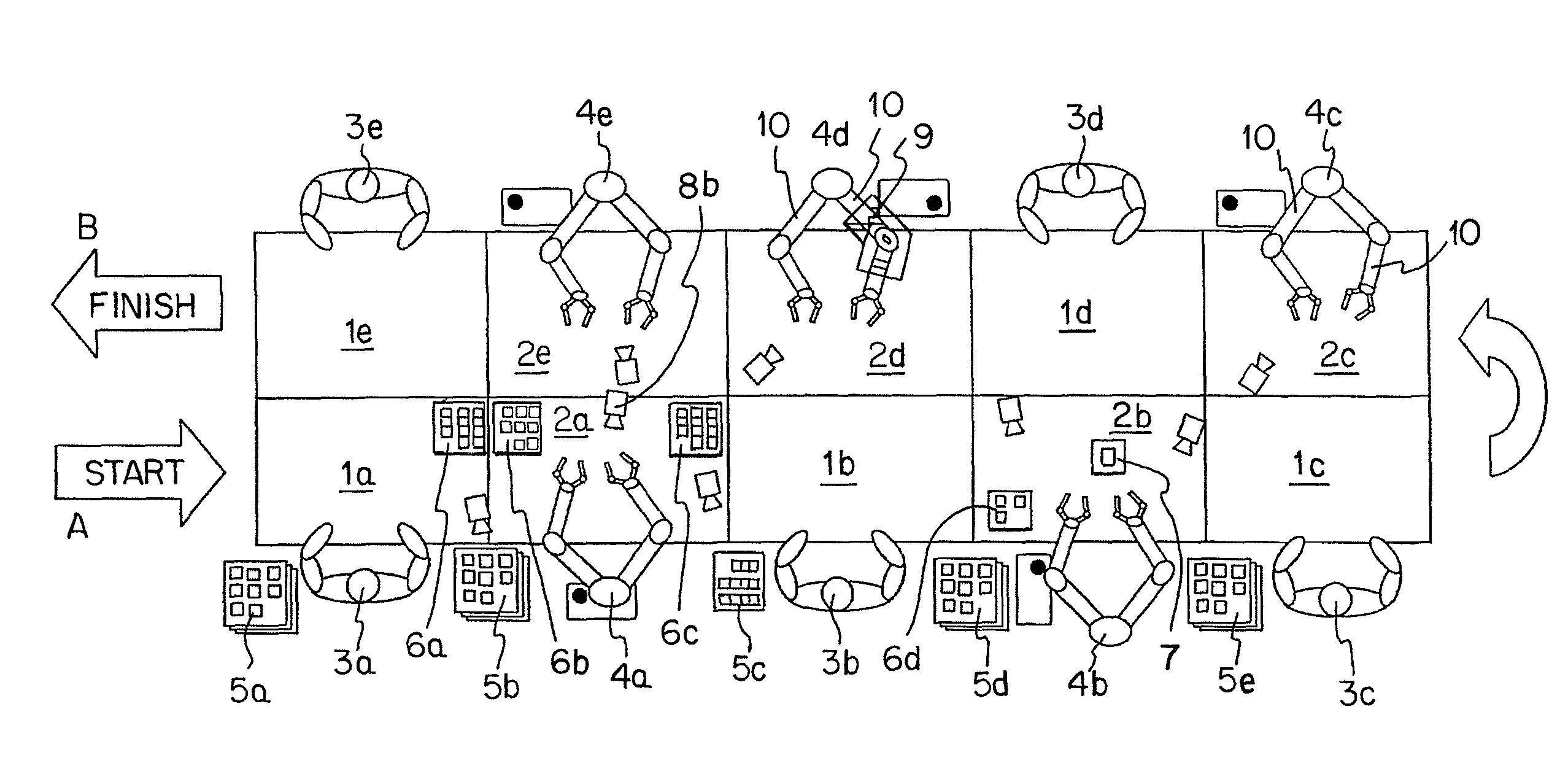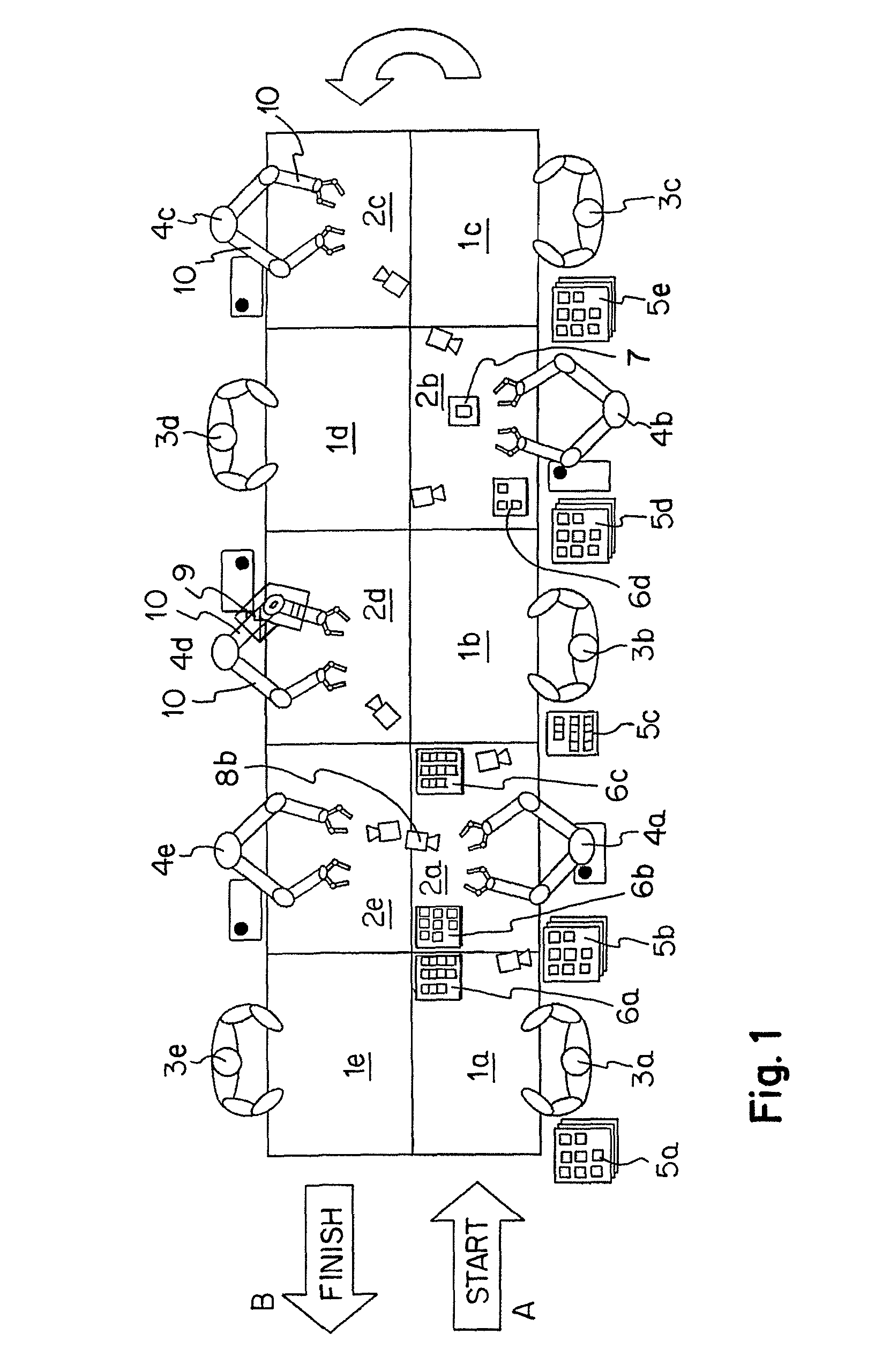Production line and method for operating such
a production line and production method technology, applied in the direction of process and machine control, mechanical control devices, instruments, etc., can solve the problems of long time to engineer, human injury risk, and inability to meet the needs of human body, so as to reduce labor costs, reduce labor costs, and increase safety
- Summary
- Abstract
- Description
- Claims
- Application Information
AI Technical Summary
Benefits of technology
Problems solved by technology
Method used
Image
Examples
Embodiment Construction
[0045]In the FIGURE a production line according to an example of the invention is schematically illustrated in a view from above. In this example the production line consist of ten working stations 1a-e, 2a-e, arranged in two parallel lines. Each working station is operated either by a human 3a-e such as in working stations 1a-e or by a robot 4a-e such as in working stations 2a-e.
[0046]Objects to be manipulated by the operators, i.e. the human and the robots, reach the production line at arrow A. The objects leave the production line at arrow B. The objects leave the production line either as finished products or as semi-manufactured articles for transport for further operation within the plant or elsewhere.
[0047]Incoming objects are temporarily stored in a first intermediate storage 5a. In this example the first working station 1a is operated by a human 3a. The working step in this first working station might for example be a first assembling operation, where a component from a co...
PUM
| Property | Measurement | Unit |
|---|---|---|
| power | aaaaa | aaaaa |
| mass | aaaaa | aaaaa |
| mass | aaaaa | aaaaa |
Abstract
Description
Claims
Application Information
 Login to View More
Login to View More - R&D
- Intellectual Property
- Life Sciences
- Materials
- Tech Scout
- Unparalleled Data Quality
- Higher Quality Content
- 60% Fewer Hallucinations
Browse by: Latest US Patents, China's latest patents, Technical Efficacy Thesaurus, Application Domain, Technology Topic, Popular Technical Reports.
© 2025 PatSnap. All rights reserved.Legal|Privacy policy|Modern Slavery Act Transparency Statement|Sitemap|About US| Contact US: help@patsnap.com


